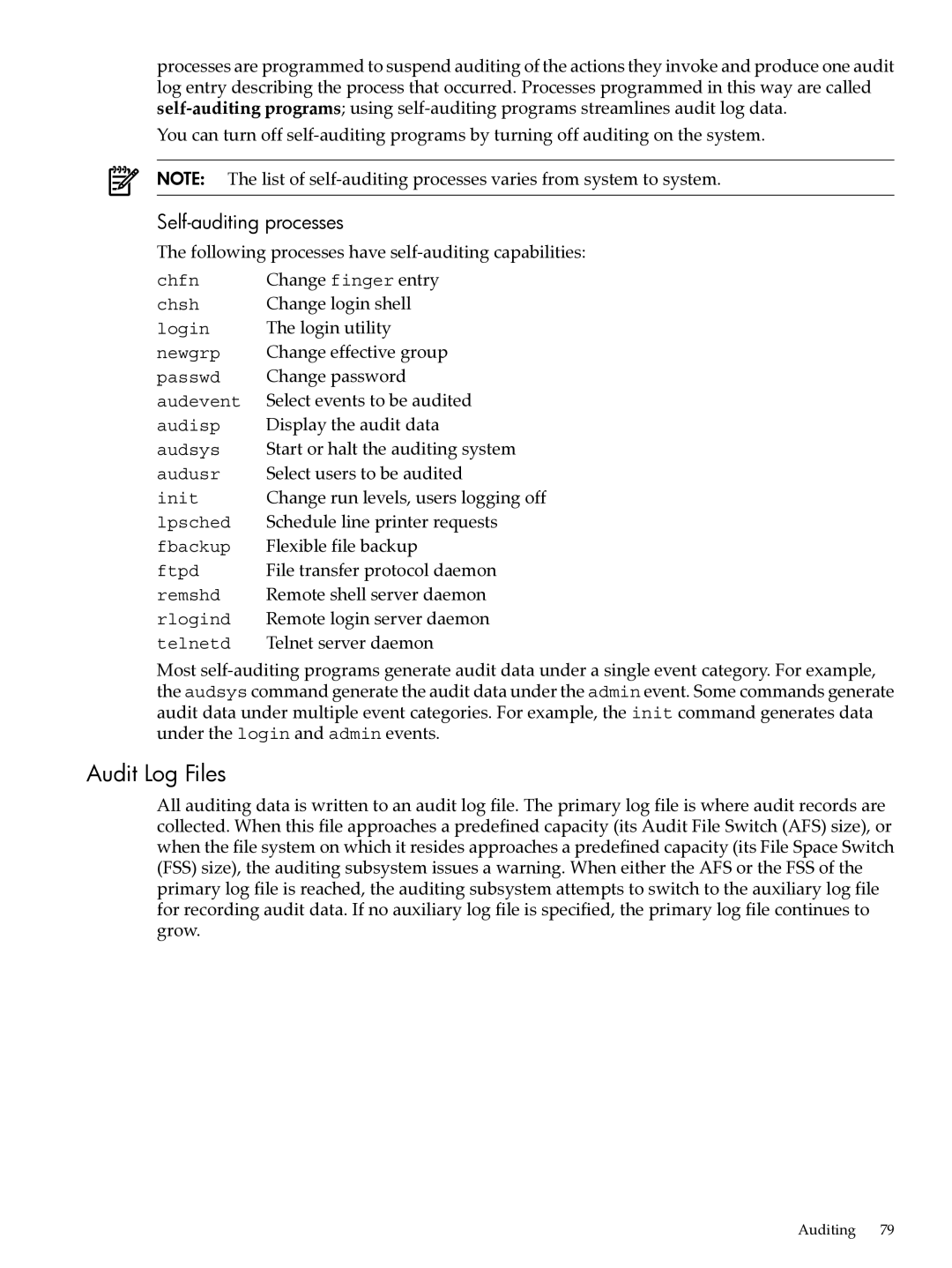processes are programmed to suspend auditing of the actions they invoke and produce one audit log entry describing the process that occurred. Processes programmed in this way are called
You can turn off
NOTE: The list of
Self-auditing processes
The following processes have
chfn | Change finger entry |
chsh | Change login shell |
login | The login utility |
newgrp | Change effective group |
passwd | Change password |
audevent | Select events to be audited |
audisp | Display the audit data |
audsys | Start or halt the auditing system |
audusr | Select users to be audited |
init | Change run levels, users logging off |
lpsched | Schedule line printer requests |
fbackup | Flexible file backup |
ftpd | File transfer protocol daemon |
remshd | Remote shell server daemon |
rlogind | Remote login server daemon |
telnetd | Telnet server daemon |
Most
Audit Log Files
All auditing data is written to an audit log file. The primary log file is where audit records are collected. When this file approaches a predefined capacity (its Audit File Switch (AFS) size), or when the file system on which it resides approaches a predefined capacity (its File Space Switch (FSS) size), the auditing subsystem issues a warning. When either the AFS or the FSS of the primary log file is reached, the auditing subsystem attempts to switch to the auxiliary log file for recording audit data. If no auxiliary log file is specified, the primary log file continues to grow.
Auditing 79
